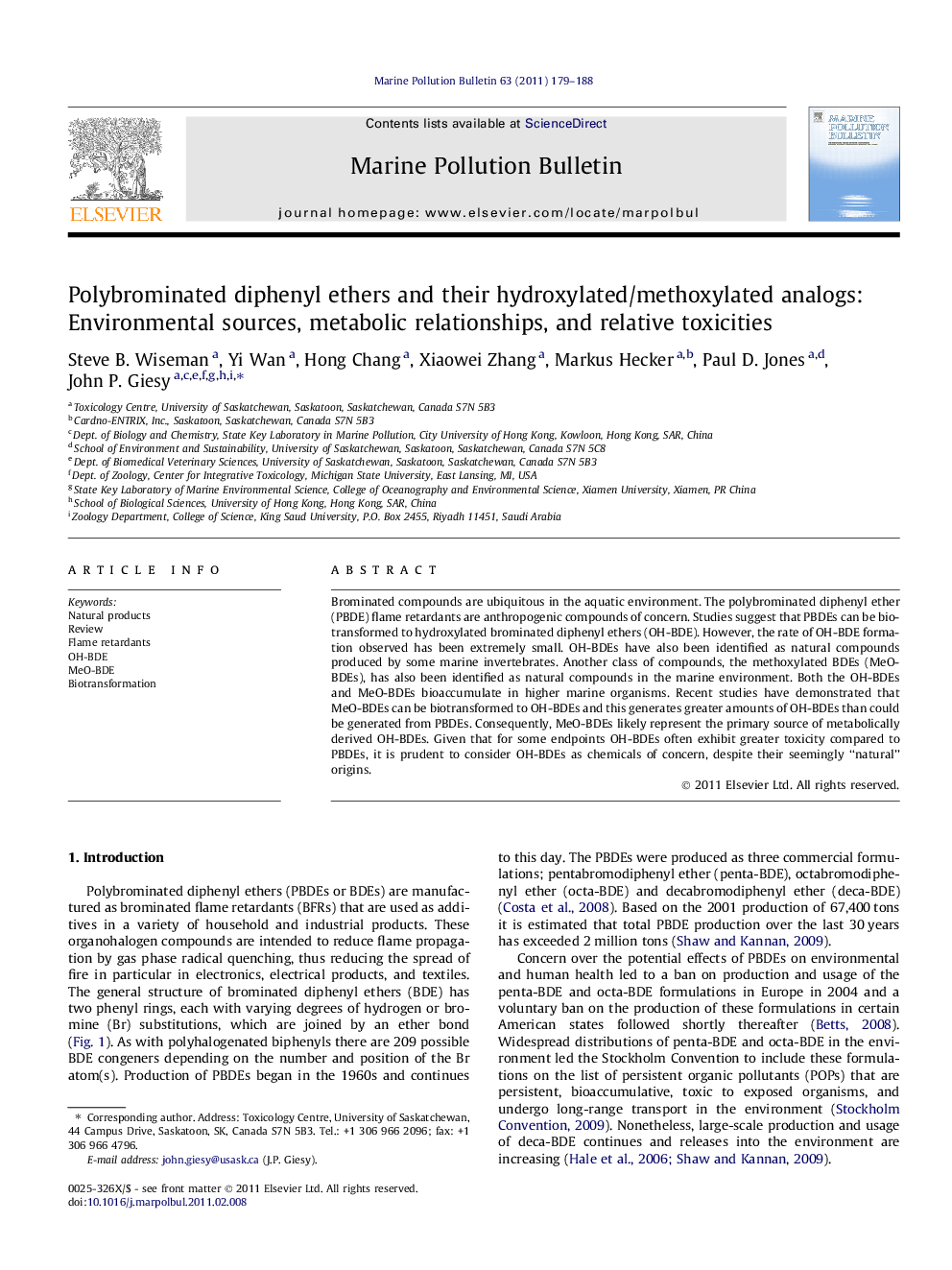| Article ID | Journal | Published Year | Pages | File Type |
|---|---|---|---|---|
| 6360636 | Marine Pollution Bulletin | 2011 | 10 Pages |
Abstract
Brominated compounds are ubiquitous in the aquatic environment. The polybrominated diphenyl ether (PBDE) flame retardants are anthropogenic compounds of concern. Studies suggest that PBDEs can be biotransformed to hydroxylated brominated diphenyl ethers (OH-BDE). However, the rate of OH-BDE formation observed has been extremely small. OH-BDEs have also been identified as natural compounds produced by some marine invertebrates. Another class of compounds, the methoxylated BDEs (MeO-BDEs), has also been identified as natural compounds in the marine environment. Both the OH-BDEs and MeO-BDEs bioaccumulate in higher marine organisms. Recent studies have demonstrated that MeO-BDEs can be biotransformed to OH-BDEs and this generates greater amounts of OH-BDEs than could be generated from PBDEs. Consequently, MeO-BDEs likely represent the primary source of metabolically derived OH-BDEs. Given that for some endpoints OH-BDEs often exhibit greater toxicity compared to PBDEs, it is prudent to consider OH-BDEs as chemicals of concern, despite their seemingly “natural” origins.
Related Topics
Physical Sciences and Engineering
Earth and Planetary Sciences
Oceanography
Authors
Steve B. Wiseman, Yi Wan, Hong Chang, Xiaowei Zhang, Markus Hecker, Paul D. Jones, John P. Giesy,
